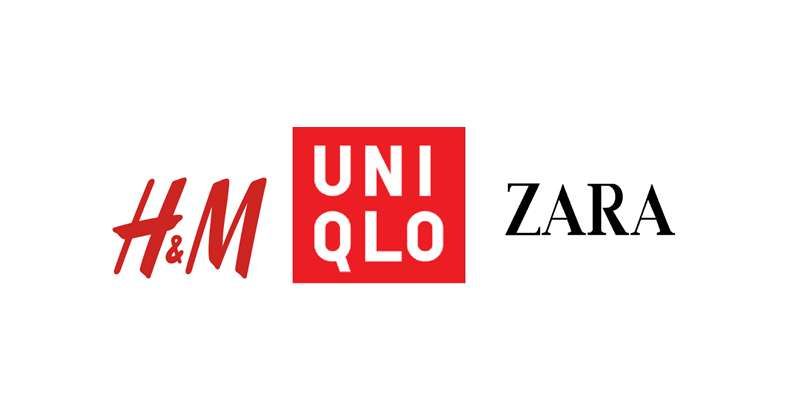
- Company overview
Uniqlo, H&M, Zara: the difference in strategies
Do you want to know how to make money from this?
Register for free and get expert advice, access to a training course and webinars.
Uniqlo’s extremely optimistic forecasts for quarterly profit growth have become known. Fast Retailing, the brand’s parent company, is expected to grow 11%. It seems that the mass-market clothing market is emerging from the post-Covid recession and is becoming attractive to investors again.
H&M, Zara and Uniqlo are three giants of the fashion industry, each with an extensive network of more than 2,000 stores spread around the world. Although they are competitors, these companies nevertheless pursue different strategies within their business models, which dictate how they manage their product range.
Ownership of materials, production capacity and policies towards complementary brands are three key areas in which differences can be seen between the three giants.
Let’s talk about retailers’ business strategies in more detail.
Uniqlo: emphasis on national tastes
Founded in Japan in 1949, Uniqlo is now part of Fast Retailing Co., which it merged with in 2005. Today, the Uniqlo chain has 2,000 stores covering more than 25 markets around the world. The company entered the American market in 2006, but by May 2022 the number of stores in the United States reached only 43.
Uniqlo’s distribution channels are concentrated in the brand’s country of origin, with 812 Uniqlo stores located in Japan. Uniqlo’s distribution strategy is based on optimizing the timing of product arrivals in stores. At the same time, the release of new models is focused not on quantitative indicators, but on real demand.
Uniqlo is sensitive to changes in the Japanese fashion industry, adapting its models in accordance with the minimalist style popular in Japan. This, in turn, affects Uniqlo’s attractiveness to Western markets.
Zara: supply control
Zara, founded in 1975 in Spain, is the youngest brand among those considered. Owned by textile giant Inditex, Zara is its flagship brand.
Zara’s key advantage is complete control over the supply chain, which allows the company to significantly speed up product turnover. From development to sale of a new product in a Zara store, it can take only a month.
Today, the Zara chain has 2,001 stores. The largest number of their stores, including Zara Home, are located in Spain.
Zara’s strategy is based on offering a wider range of affordable products than its competitors. While most clothing retailers produce and sell between 2,000 and 4,000 different items of clothing per year, Zara is well ahead of them, producing over 10,000 items.
This unique strategy allows Zara to attract a wider range of customers with diverse tastes, which is responsible for the phenomenal success of the brand.
H&M: experience and creativity
H&M, or Hennes & Mauritz, is the oldest of the three brands in question. Founded in Sweden in 1947, the retailer has grown to become one of the most recognizable brands in the fashion industry. Over the past few years, H&M has expanded its network significantly on a much larger scale than Zara and Uniqlo.
Despite its reputation as a budget retailer, H&M owns the COS (Collection of Style) brand, which offers higher-end products at higher prices. H&M also owns six other brands: Monki, Weekday, H&M Home, & Other Stories, Afound and Arket.
One element of H&M’s strategy to increase sales is to offer customers exclusive products created through collaborations with famous designers such as Versace and Alexander Wang. By offering these collections in its stores, H&M enhances its reputation by collaborating with fashion influencers, while at the same time offering its customers additional lines of clothing that differ from the company’s main models.
Key differences between retailers
H&M positions itself as a company that offers a wide range of brands with unique styles for different customers. Each H&M brand has its own price range and visual concept. For example, COS targets European markets and offers a higher average price than H&M’s core basket. At the same time, Monki positions itself as a youth brand with lower prices.
Zara, on the other hand, strives to create an image of an elite retailer with affordable prices. Zara stores are opening in key transport locations around the world where real estate values are high, highlighting the brand’s status.
Uniqlo designs and sells its own clothing exclusively in its stores and website. The company also uses sporting events to attract the attention of the general public. Uniqlo’s clothing designs are simpler and more practical than those of Zara and H&M, which allows them to attract an additional segment of the audience.
Do you want to know
How to make money from the news
Register for free and get:
- Expert consultation;
- Access to the training course;
- Opportunity to participate in webinars

